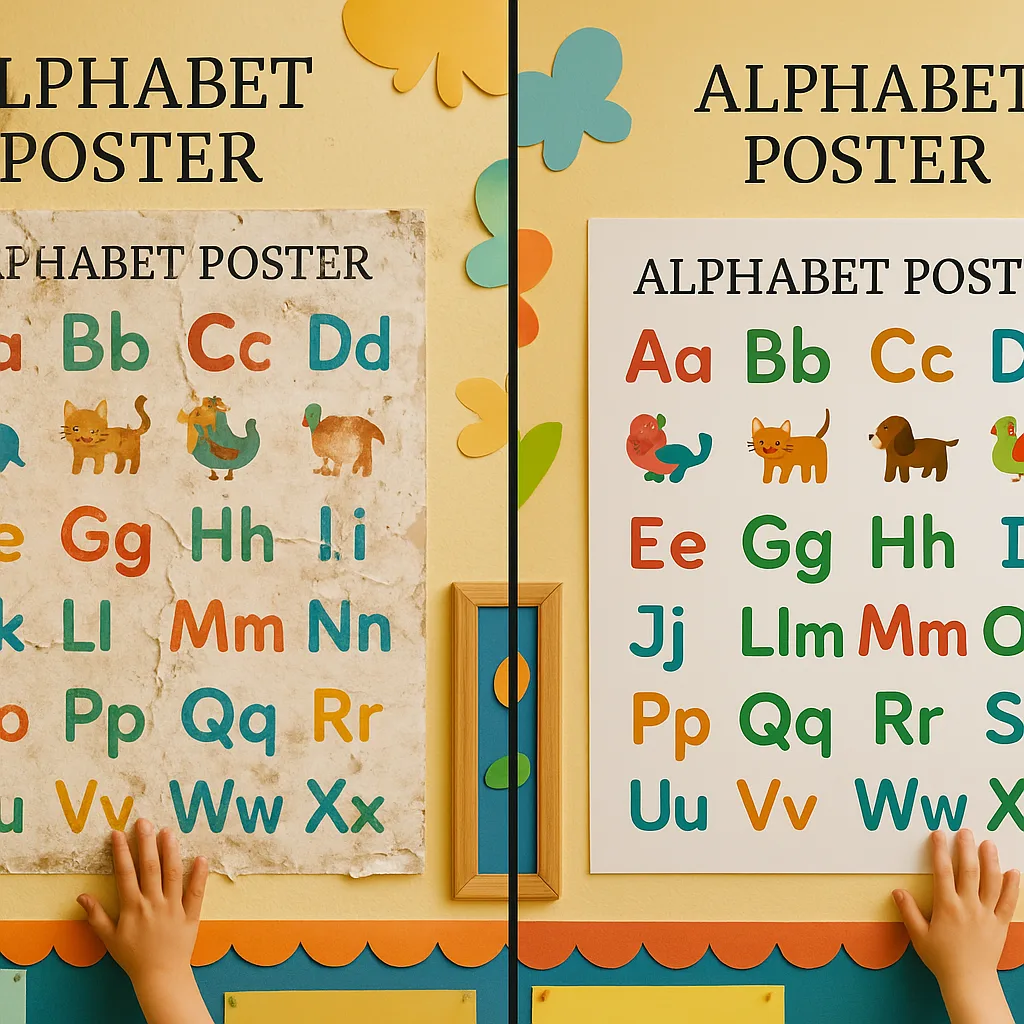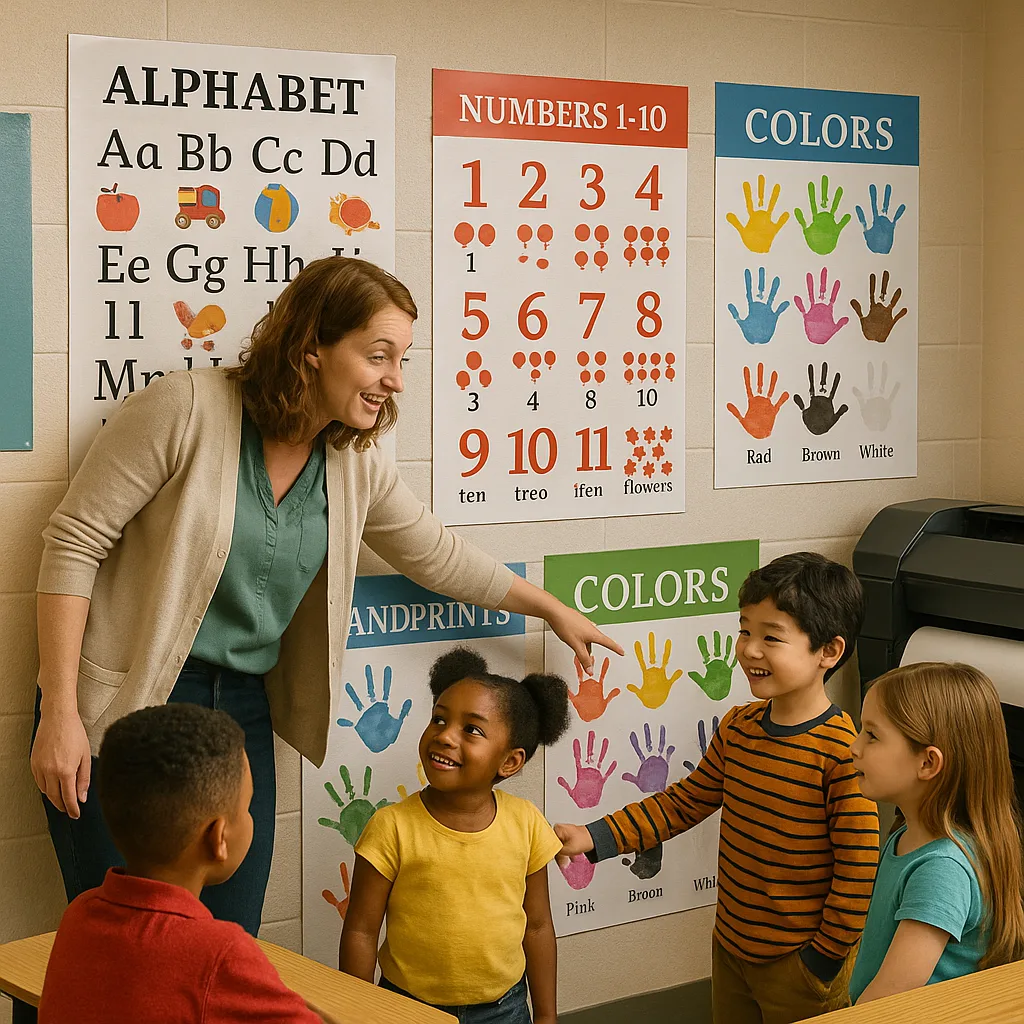Poster Maker Machines: Paper Performance Guide
Paper Performance Report Card: Rating Poster Materials
As an educator with years of classroom experience, I’ve seen firsthand how the right paper choice can make or break a poster project. Whether you’re using poster maker machines paper guide recommendations for kindergarten tactile activities or high school presentation boards, selecting appropriate materials is crucial for success.
Understanding Paper Performance in Educational Settings
During my time both teaching and now as a Vice Principal, I’ve evaluated countless poster materials across different grade levels. Each age group presents unique challenges – from sticky kindergarten fingers to high-traffic hallway displays. The key is matching paper characteristics to student needs and environmental demands.
Through systematic observation and feedback from teachers across our district, I’ve developed a comprehensive rating system that evaluates poster papers based on four critical criteria: durability against handling, tear resistance, cleanability, and visual appeal. Furthermore, this assessment considers the distinct requirements of elementary tactile learning versus secondary information display needs.
Elementary School Paper Performance Ratings
In elementary settings, posters serve multiple purposes beyond simple display. They become interactive learning tools, reference materials for daily activities, and creative expression platforms. Based on extensive classroom testing with our Classroom Pro 24 Poster Maker Advanced Package, here’s how different paper types perform:
Coated Poster Paper (Grade: A+)
This champion material excels in elementary environments. Its protective coating resists fingerprints, food spills, and art supply accidents. During our third-grade science fair last spring, coated posters endured three days of constant touching without showing wear. Additionally, the smooth surface allows for easy cleaning with standard classroom wipes.
Heavyweight Coated Paper (Grade: A)
Perfect for high-touch areas like reading corners and math stations. The extra thickness provides structural integrity when students lean against walls or accidentally bump displays. Moreover, the coating accepts lamination beautifully for extended durability.
Satin Photo Paper (Grade: B+)
While offering stunning visual quality for student artwork displays, satin paper requires more careful handling. Best reserved for protected areas or short-term showcases where visual impact matters most. The surface shows fingerprints but cleans reasonably well with microfiber cloths.
Standard Poster Paper (Grade: C)
Budget-friendly but limited in durability. Suitable for temporary displays or areas with minimal student contact. Without coating, these papers absorb moisture and oils from hands, leading to deterioration within weeks in active classrooms.

Secondary School Paper Performance Analysis
Secondary school environments present different challenges. Here, posters serve primarily as information delivery systems, presentation tools, and long-term displays. Durability remains important, but aesthetic quality and professional appearance take precedence.
Based on feedback from our high school department heads and observations from district-wide implementations, secondary schools benefit from different paper priorities. The shift from hands-on interaction to visual communication changes our evaluation criteria significantly.
Matching Paper to Purpose: Real-World Applications
Throughout my career, I’ve seen how proper paper selection dramatically impacts educational outcomes. Let me share specific scenarios where material choice made the difference between success and disappointment.
Elementary Success Story: Interactive Math Walls
Our second-grade team created reusable math manipulative posters using heavyweight coated paper with our poster maker machines. Students use dry-erase markers directly on the laminated surfaces for problem-solving. After six months of daily use, these posters still look pristine. The initial investment in quality materials saved hundreds of dollars in replacement costs.
Secondary Success Story: AP History Timeline Project
Last year’s AP History students created a 40-foot timeline using glossy photo paper for image clarity and matte paper for text sections. This combination maximized visual impact while ensuring readability under hallway lighting. The project earned district recognition and remains on permanent display.
Cross-Level Application: School-Wide Positive Behavior Support
Our PBS posters required materials suitable for both elementary sticky fingers and secondary high-traffic zones. We selected outdoor banner vinyl for main corridors and coated poster paper for classroom displays. This strategic approach balanced durability needs with budget constraints.
Understanding your specific needs helps optimize both educational impact and resource allocation. Consider consulting our detailed cost breakdown to calculate long-term savings when selecting appropriate materials.
Ready to Elevate Your School’s Visual Learning?
Transform your educational spaces with the perfect combination of quality poster maker machines and appropriate materials. Whether you’re creating interactive elementary learning stations or professional secondary displays, we have solutions tailored to your needs.
Conclusion: Making Informed Paper Choices
Selecting appropriate poster materials significantly impacts both educational effectiveness and budget efficiency. Through careful evaluation of durability, cleanability, visual appeal, and age-appropriate characteristics, educators can maximize their poster maker machines’ potential while creating engaging learning environments.
Elementary schools benefit most from durable, cleanable surfaces that withstand constant interaction, while secondary schools can prioritize visual quality and professional presentation. By matching materials to specific uses and environments, schools create sustainable visual learning programs that enhance education without straining budgets.
For personalized recommendations based on your school’s unique needs, explore our comprehensive comparison guide or contact our education specialists who understand the intersection of pedagogy and practical classroom management.
Remember, the best poster is one that serves its educational purpose effectively while standing up to real-world classroom conditions. With proper material selection and quality printing equipment, your visual learning aids become lasting investments in student success.

